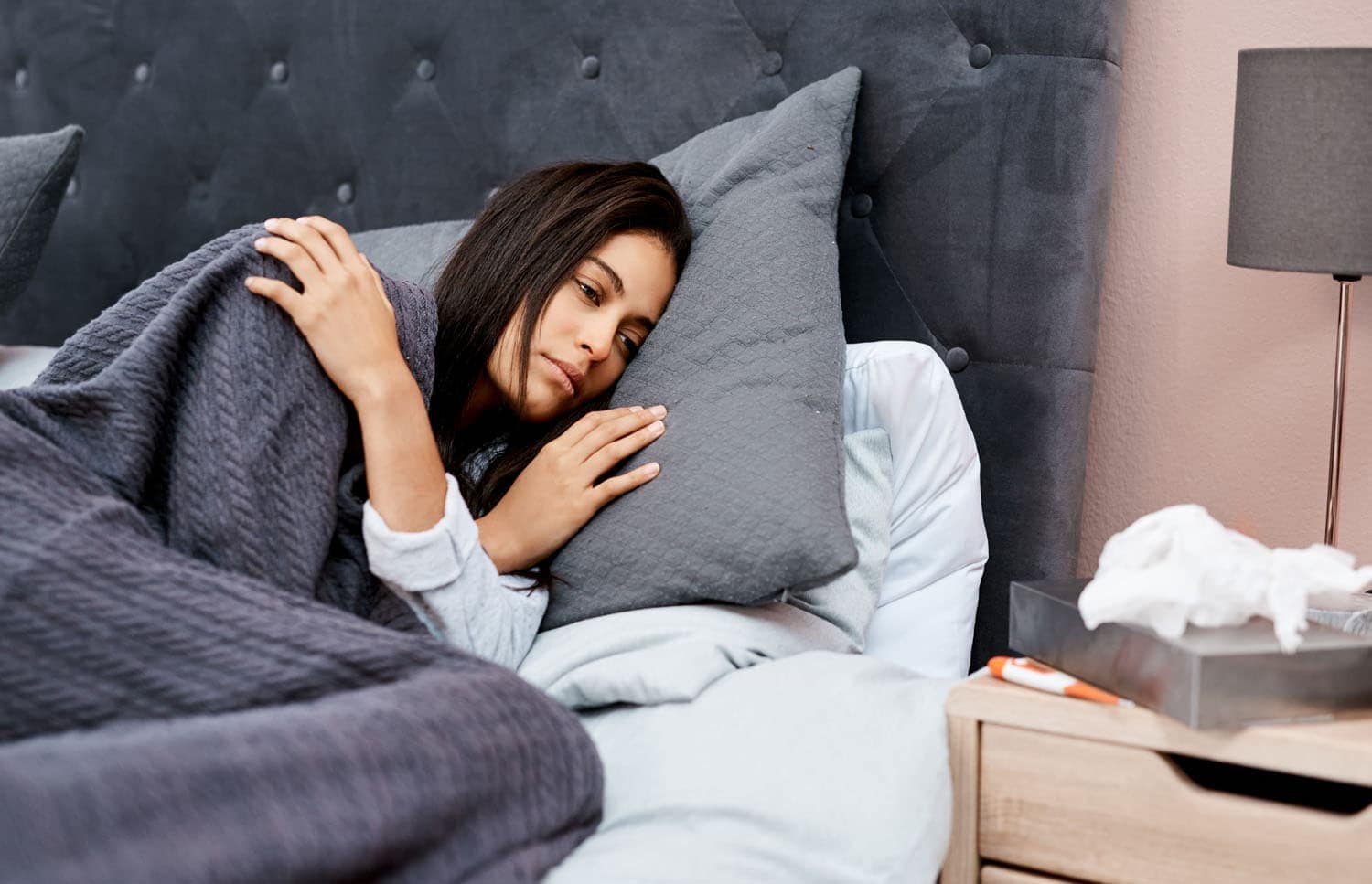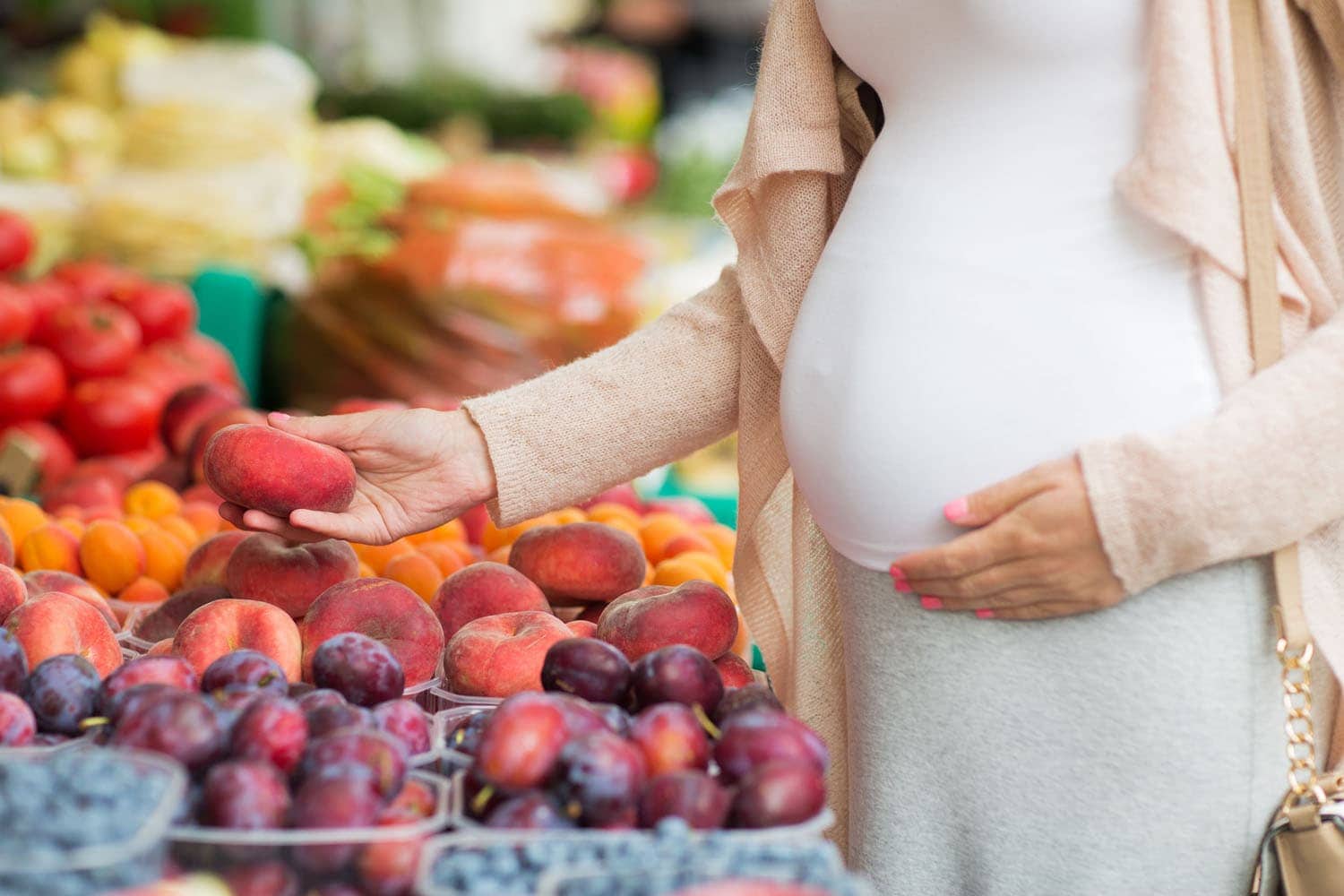Women’s health
Healthy and powerful through all phases of a woman’s life
Iron deficiency
Iron is like fresh air for the cells
External signs may include pale, dry skin, brittle hair and nails and cracked corners of the mouth. Iron deficiency is often accompanied by loss of appetite. However, when these symptoms appear, the condition is already quite advanced: In the event of an undersupply, the body first draws on the iron stores in the cells, then on the iron ions in the blood. In the medium term, it can even lead to anaemia. If you notice these or similar symptoms, it is advisable to consult your doctor.
Iron deficiency is common
We use a relatively large amount of iron: Our bodies use between one and three milligrams of iron daily. It is therefore important to regularly replenish our iron stores. The body can only actually absorb a small part of the mineral from food. Iron from animal products is easier to reabsorb. Here, too, vitamin C can be helpful as it increases the absorption of iron into the body.
Certain population groups tend to lose a particularly large amount of iron or have an increased need for various reasons:
Increased need
Athletes, pregnant women, women of childbearing age, growing children. The latter gain significant muscle mass and blood in a relatively short time so iron levels need to be adjusted to keep up. Athletes excrete iron through urine, sweat and tiny muscle tears. Women lose iron with their menstrual period. Severe blood loss from giving blood also drastically lowers iron levels. Pregnant women also need to ensure sufficient supply for the foetus.
Absorption issues
Chronic intestinal diseases in particular, but also stomach diseases, can lead to reduced iron absorption. Some medicines also inhibit iron absorption.
Undersupply
Furthermore, vegans and vegetarians belong to the risk groups, because meat is an important source of easily usable iron.
What do you have to watch out for with iron deficiency?
In most cases, an iron-rich diet helps to raise our iron level again and refill our storage capacity. But a food supplement can also be useful. In any case, discuss the dosage with your doctor, as the body does not excrete excess iron and an overdose can have dangerous consequences! In principle, you should try to eat an iron-rich diet. The trace element is found in both plant and animal foods:
Animal iron is bivalent, meaning it is present as a compound with two iron ions, and can be absorbed by the body more easily than plant iron. The bioavailability of iron from liver, red meat and fish is about 25%, which means that our body can only actually utilise a quarter of it.
Our bodies can only absorb a small amount of trivalent iron from plant sources, such as legumes, green vegetables, potatoes or red fruits, and its bioavailability is only around 8%.
Improve the absorption of iron
In addition, you can increase the bioavailability of plant iron with the help of a tasty trick that is especially interesting for vegans and vegetarians: with vitamin C. So by drinking a glass of orange juice with your meal, for example, you can improve your iron level considerably! Alternatively, you can finish off a meal with some fresh lemon juice if you enjoy it.
Foods with ingredients that inhibit or block iron absorption should at least not be eaten at the same time as foods containing iron. These include teas, coffee and red wine because of their tannin content, but also leafy vegetables such as spinach or rhubarb (oxalic acid) and dairy products because of the calcium and cheese, which contains zinc. Phosphate, as contained in many soft drinks (cola) and sausages, is also one of the substances that is bad for iron absorption.
Even just balancing our iron level can provide more energy and boost performance. But there is more you can do against constant fatigue… you can find many tips for more energy in day-to-day life here.
Cystitis
A condition predominantly experienced by women: Inflammation of the bladder (cystitis)
Increased urge to urinate and sharp pain when urinating: Almost every woman knows the typical symptoms of cystitis and many experience cystitis several times a year. In most cases, a urinary tract infection like this resolves quickly and without complications, but sometimes a visit to the doctor and antibiotics are required. We have compiled all the important information on causes, progression, treatment and prevention for you.

What is cystitis?
Which factors make you more susceptible to cystitis?
What are the symptoms?
How is cystitis diagnosed?
How is cystitis treated?
How can cystitis be prevented?
Those who suffer from recurrent urinary tract infections can take numerous steps to reduce the risk of recurrence:
- Drink at least two litres a day! This flushes any germs out of the bladder and prevents them from attaching themselves to the bladder cells.
- Go to the toilet regularly and don’t wait until your bladder is full to bursting.
- Always clean yourself from front to back after emptying your bowels to avoid moving germs from the anal area into the urethral area.
- Only use water or pH-neutral intimate hygiene products for intimate cleansing.
- Do not wear synthetic fibre underwear if possible
- Cotton underwear should also not be worn too tightly and should be washed at 60° Celsius if possible.
- As more bacteria can enter the urethra during sexual intercourse, it is recommended to go to the toilet immediately afterwards.
- Condoms can protect against bladder infections. Chemical contraceptives, the IUD or a diaphragm increase the risk of infection
- Avoid cold feet and take off wet swimwear immediately after swimming.
Pregnancy
Nutrition during pregnancy
A poor diet can lead to a lack of nutrients and be dangerous for mother and baby. On the one hand, complications can occur during pregnancy, and on the other hand, an adequate supply of vital substances is important for the healthy development of the baby. But does that mean you need to eat for two? Contrary to this common assumption, pregnant women only need more energy in the second half of pregnancy. And even then, they only need about 255 extra calories per day, which is roughly equivalent to a cheese sandwich.
Nutrient requirements increase by leaps and bounds
A conscious and balanced diet is therefore particularly important in these phases of life. But it is not always easy to meet the increased nutrient requirements just by choosing the right foods. In this case, targeted nutritional supplementation can be useful.
B vitamins for mother and baby
Attention: Vegetarians and vegans in particular are susceptible to a vitamin B12 deficiency and should pay special attention to making sure you get an adequate supply! Special dietary supplements without animal ingredients can compensate for this. In general, however, a strictly vegan diet is not recommended for pregnant women because of the increased nutrient requirements.
Within the vitamin B complex, folic acid and choline are of particular importance: A deficiency in folic acid is associated with development issues with the neuronal tube in the embryo, which can lead to spina bifida in babies. It can sometimes be difficult to meet the additional folic acid requirement through food alone. In addition to foods containing folic acid, such as cabbage, pulses and fruit, a dietary supplement can therefore be useful.
Iron and iodine should be used with caution
The situation is similar with iron. In addition to the normal mental development of children, iron is especially important for blood formation. Only when there are enough red blood cells can the body ensure sufficient oxygen supply for mother and baby. Many women take an iron supplement on their own initiative to cover the double iron requirement during pregnancy. But there are also dangers associated with overdosing! Initially, you should try to meet your needs with iron-rich foods such as red meat and eggs, legumes, wholemeal products or green vegetables instead and only take a high-dose food supplement in close consultation with your doctor.
Nutrition tips for pregnant women
It goes without saying that you should not drink alcohol during pregnancy to protect the baby. But raw foods of animal origin should also be avoided during pregnancy: They can contain germs that can trigger dangerous infections in unborn and newborn babies without developed immune systems. Therefore, sushi is off the table, as is raw minced pork, tea sausage spread, cold-smoked ham and fish, raw milk cheese and dishes containing raw egg such as tiramisu or zabaglione.
You can, however, eat the following things:
- A handful of biscuits or rusks in the morning: This will raise your blood sugar level and counteract morning sickness.
- Low-fat products made from pasteurised milk: These foods provide plenty of calcium for the baby’s bone structure.
- 1-2 portions of sea fish per week: This contains iodine. In addition, the omega-3 fatty acids from herring and mackerel etc. are important for brain development.
- Five portions of fruit and vegetables a day: This is in addition to whole grain products and potatoes or rice, which cumulatively provide most of the important nutrients for you and your little one.
It is important to eat your meals regularly throughout the day. Divided into about five to six portions, they provide constant energy and nutrients. This will also help you avoid major fluctuations in blood sugar levels, which can lead to morning sickness. Drinking plenty of fluids is also important: drinks such as fruit or herbal teas and fruit juice spritzers are best. On the other hand, you should greatly reduce the amount of coffee or black tea you consume because of the caffeine or theine they contain.


